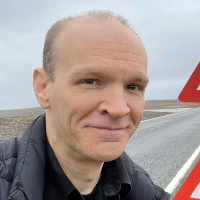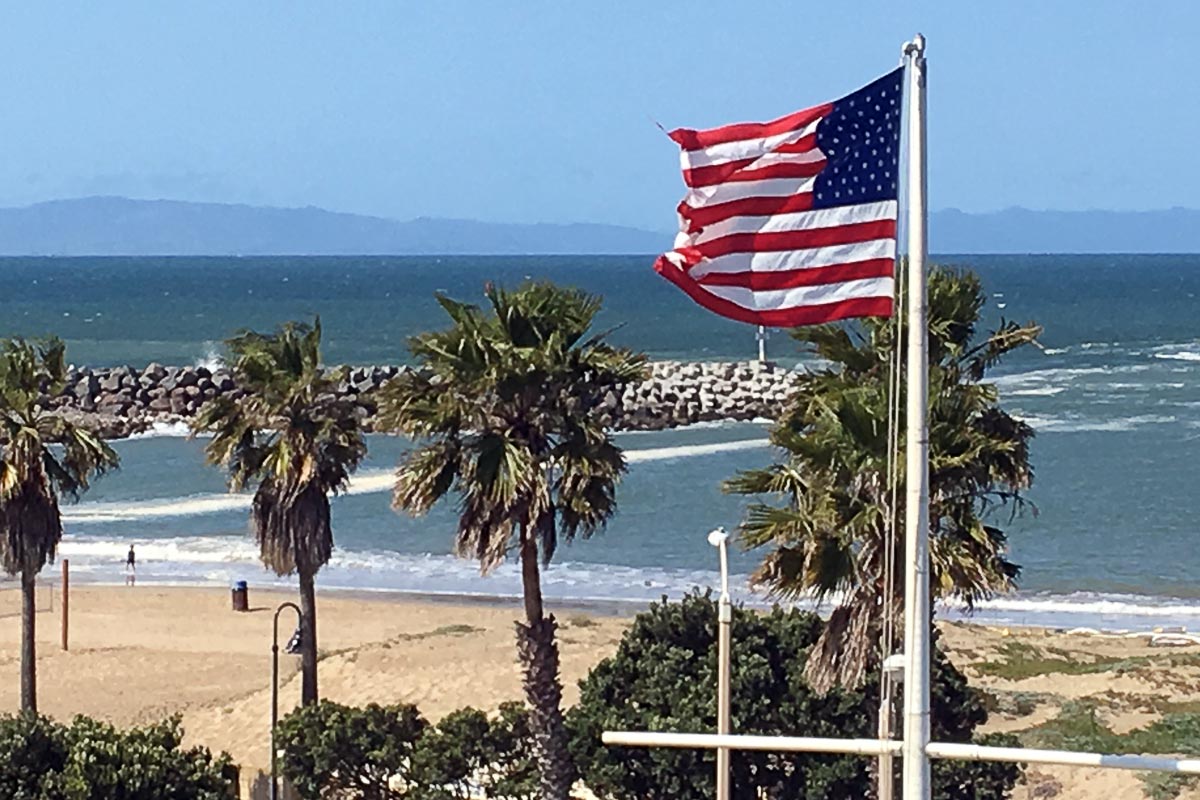
"Here come those Santa Ana winds again"
—Steely Dan
The first National Park of this epic T1D Road Trip turned out to be one of the most atypical ones: Channel Islands National Park, a set of five islands off the coast of California near Los Angeles.
Since Masayo and I haven’t created a detailed itinerary for this trip – we get to the Parks we get to, in the order that the road will dictate to us – we weren’t planning on visiting Channel Islands first. But it was after we checked into our hotel in Thousand Oaks, CA, about an hour north of L.A., that I finally took a closer look at a map and realized that the Islands are only about half an hour away.
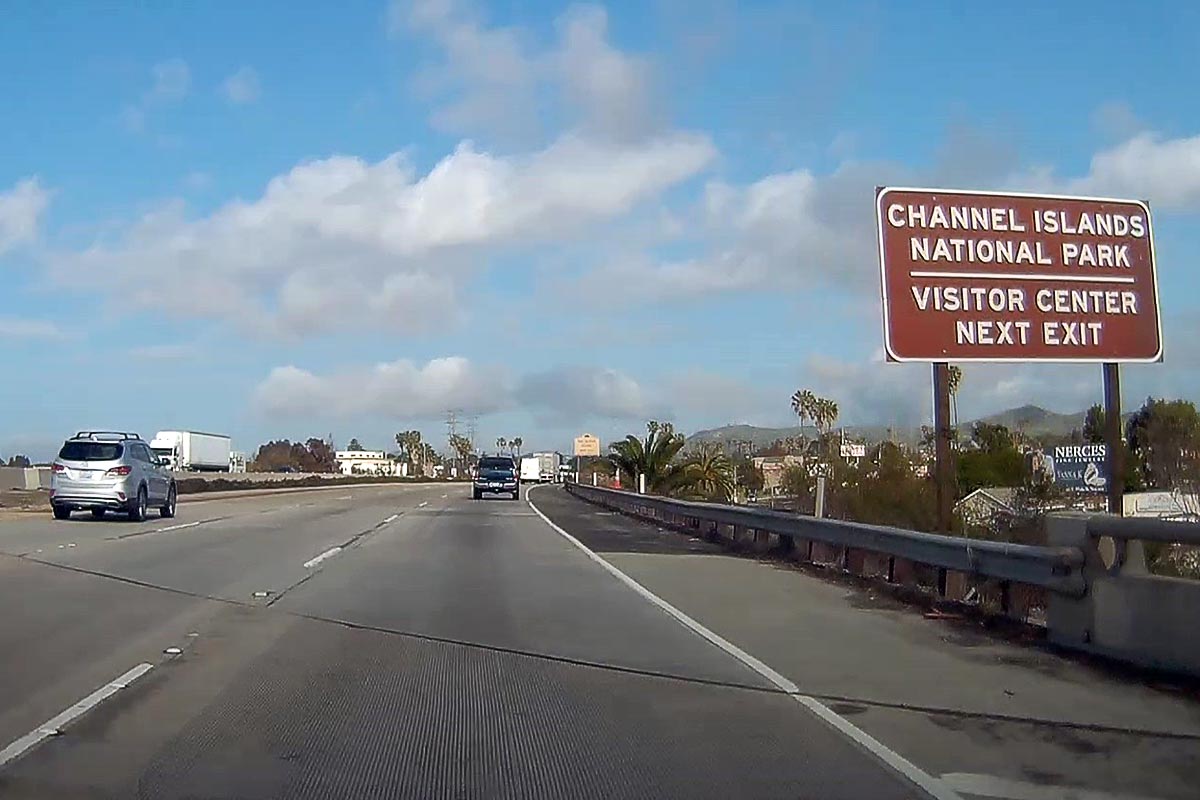
Still plagued by jet lag we were both up at 5:00 am and after the Quality Inn breakfast were on the road by 9:00. One of my rules for this trip is no interstates, but it turns out that Highway 101 to Ventura is basically an interstate. Not technically, but it’s about eight lanes of 65 mph traffic. The good part is that it winds through some surprisingly nice scenery, dramatic rolling green hills under a big sunny California sky.
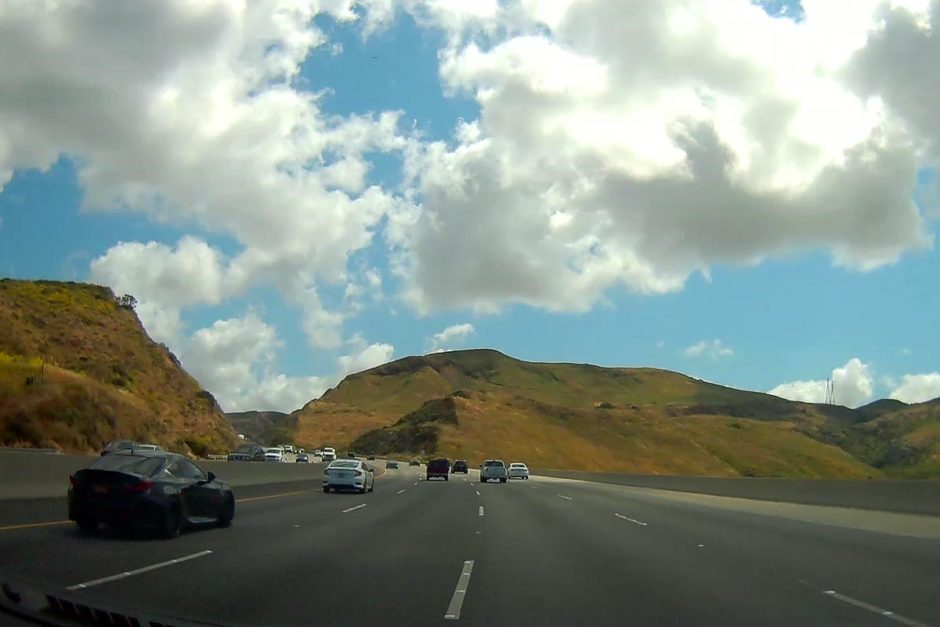
I know that the band America had a hit song called “Ventura Highway” and I’m sure I’ve heard it, but probably not for twenty years. The whole drive I was tentatively humming the vaguely-remembered melody of the song to myself.
Beginning and end of the line: Lagomarsino Visitor Center
The Channel Islands are a unique and teeming ecosystem, and each island is different. The Santa Ana winds, however, are a constant feature of the area, which not only gives them their rugged and windswept look but also often keeps tourists off the islands. We pulled into the parking lot of the Robert J. Lagomarsino Visitor Center in Ventura, which is right on the beach, and the staff told us that all tourist services to the islands were canceled today due to 9-foot waves.
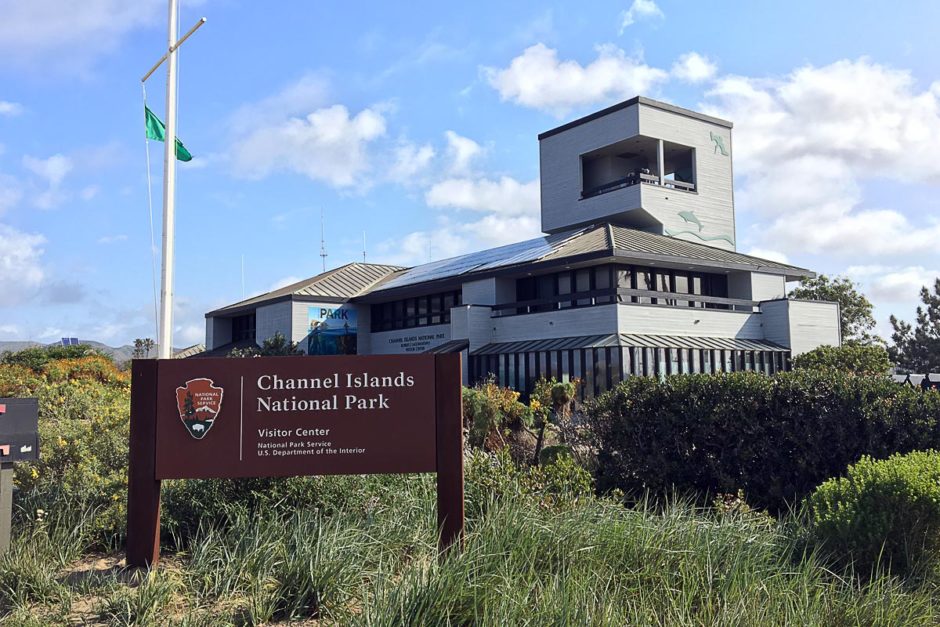
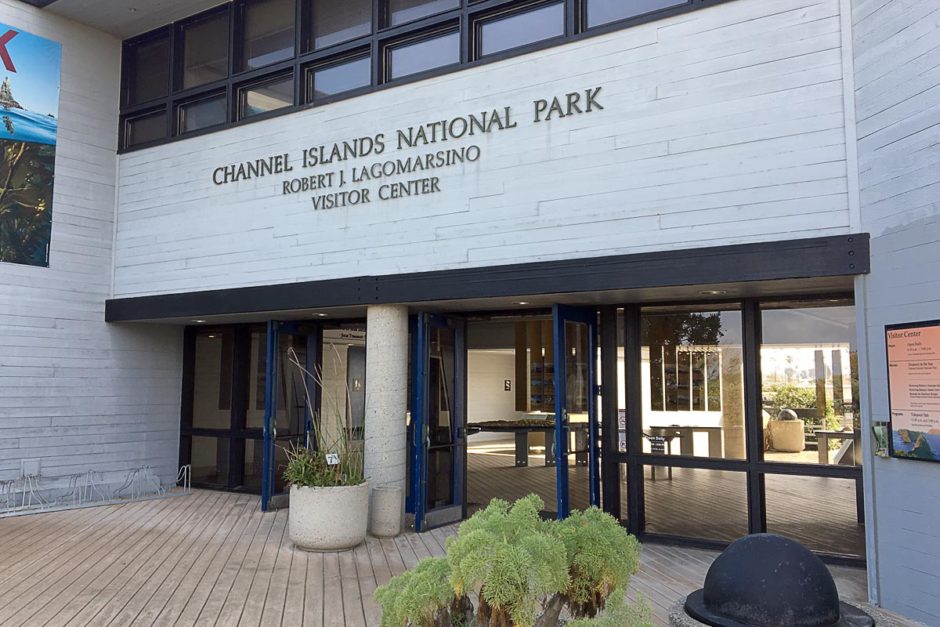
This can happen any day of the year, and you just have to take your chances. We couldn’t go to the closest island, Anacapa, for a windy hike we wanted, so we had to be content with the visitor center and the beach around it. (My guidebook says that 90% of visitors to Channel Islands NP only make it as far as the Lagomarsino Center.)
Fortunately this is one visitor center that is worth the visit in and of itself. It’s small but fascinating and instructive. Inside are displays covering the various wildlife on and around the islands, dominated by a towering sculpture of an elephant seal, a comical and improbable-looking beast. A nice waist-high aquarium sits in the center of the room, giving displays of various kinds of fish and crustaceans and, most interestingly to me, large starfish about a foot in length. I didn’t know starfish came that big.
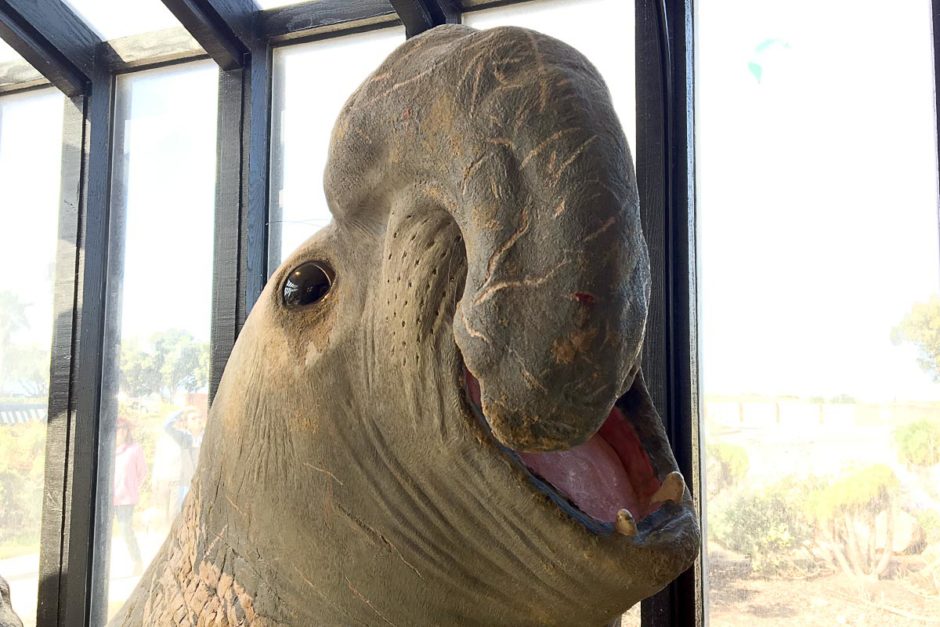
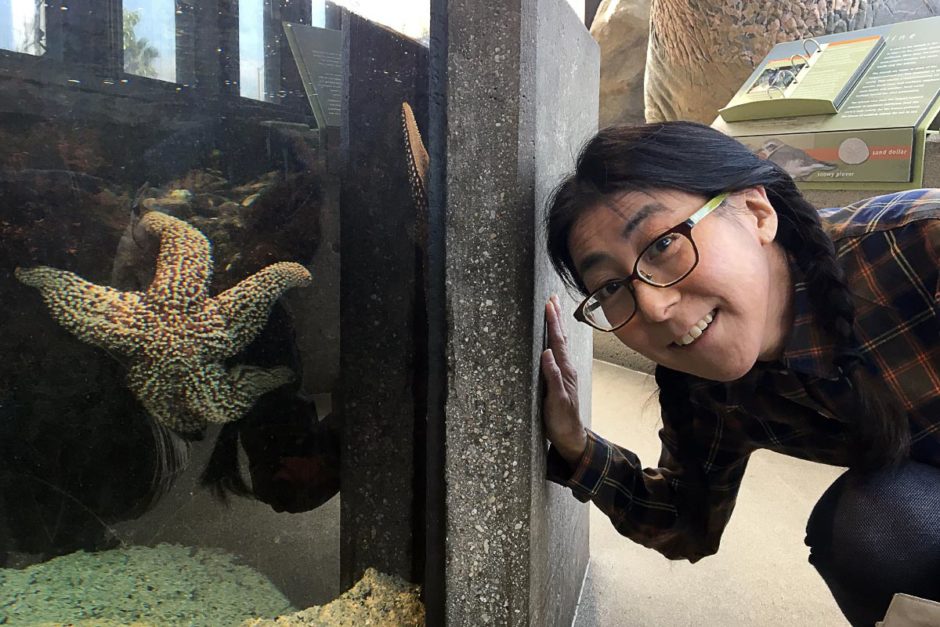
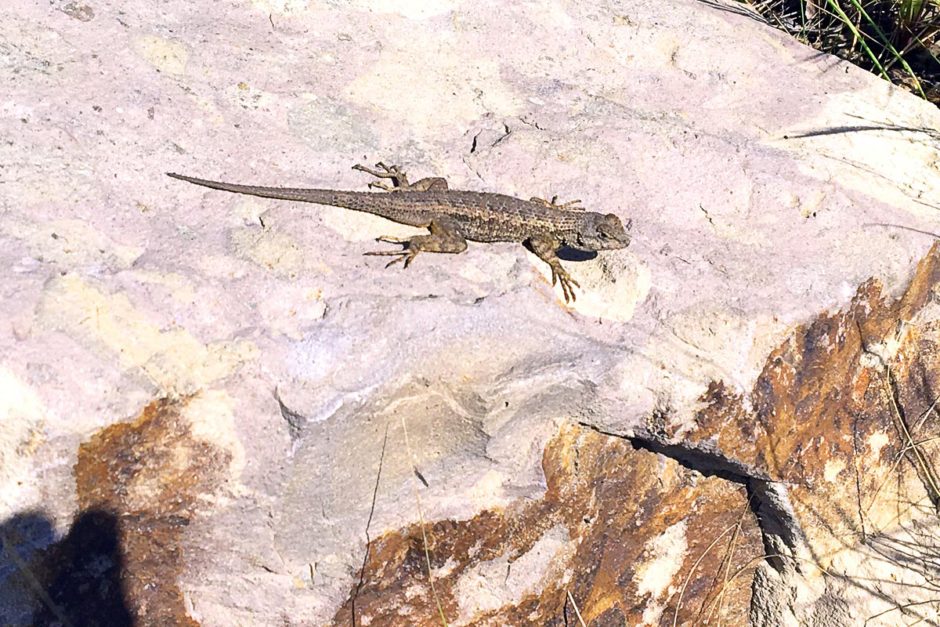
Our first wildlife of the trip.
Elsewhere is a fascinating replica of a pygmy mammoth skeleton found on Santa Rosa Island in 1994. I thought mammoths were gigantic, evil elephants from Siberia or something. Who knew that a cute little pygmy version was hanging around California 13,000 years ago.
We bought a souvenir coin booklet and a Channel Islands souvenir coin ($4 and $1, respectively). Touristy, I know, but we thought it would be fun to collect these as we visit each park over the next three months. The staff showed their hourly movie in an adjacent theater; Masayo and I sat and watched the 25-minute presentation with rapt attention, the only people in the room. (There were only about ten other tourists the entire time we were there.)
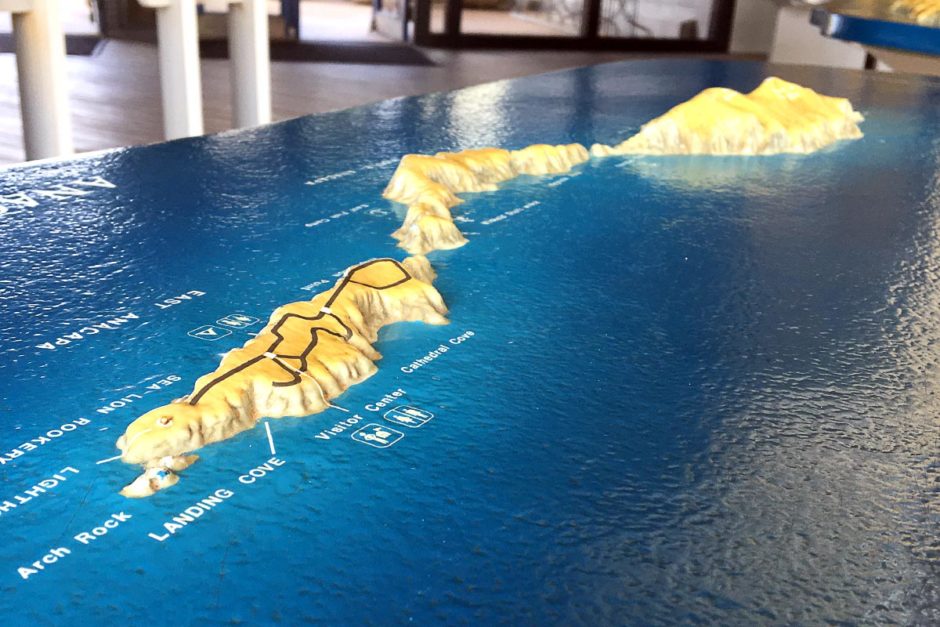
Model of Anacapa Island, our hoped-for destination today.
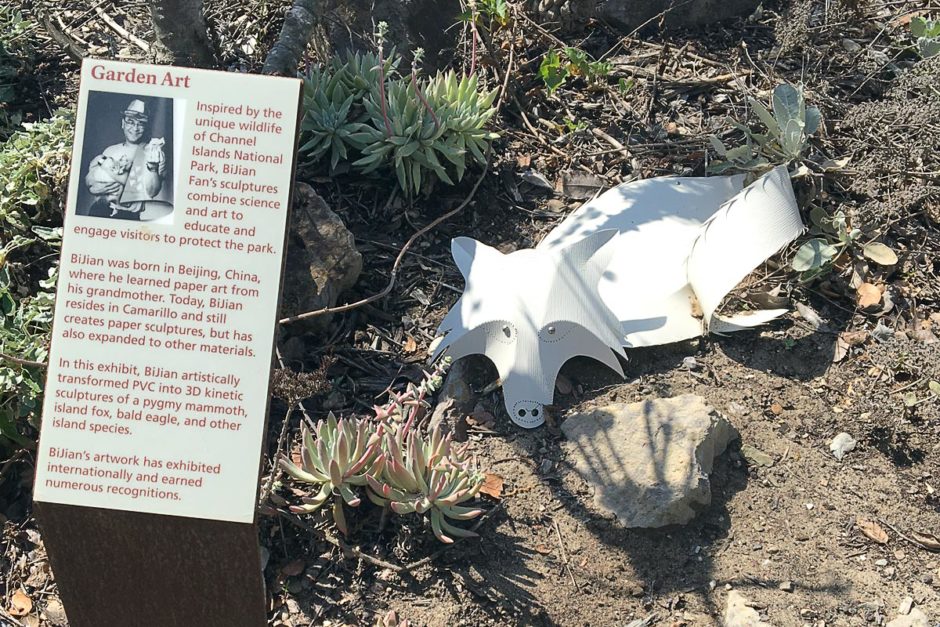
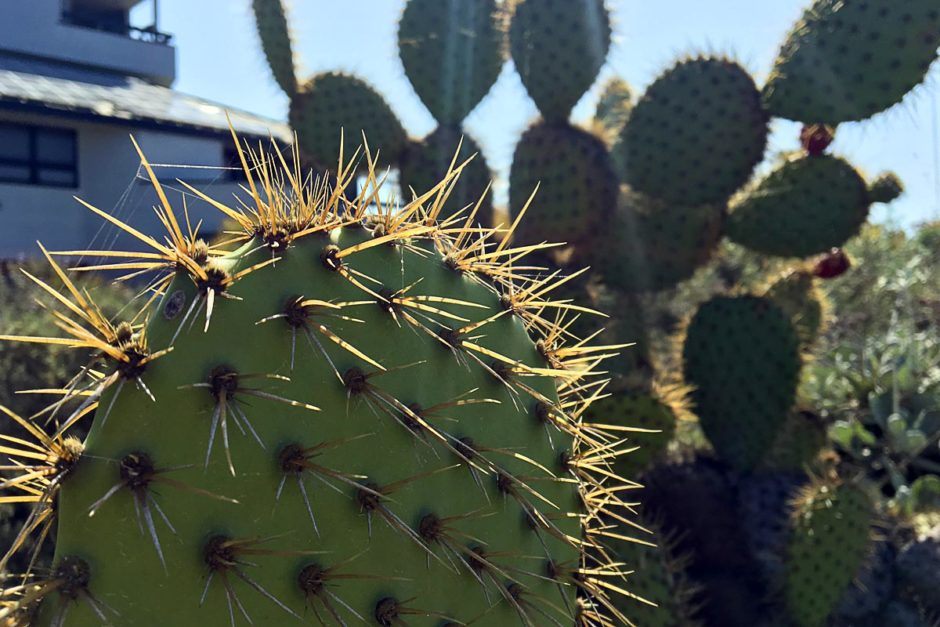
Outside the Visitor Center is a small garden featuring a riot of local plants like flowers, cactus, and trees with pine cones. Lurking among the live displays were stylistic white animal sculptures from Chinese artist BiJian Fan.
Crashing waves on the beach
Attracted by the pounding waves of the vivid green Pacific Ocean, we crossed the parking lot for a stroll on the beach. The vast parking lot was 75% empty and there were few on the beach; we humans were far outnumbered by the large gulls that moseyed back and forth through the relentless whipping wind. Wave after wave crashed mightily against the rocks and the beach, sending violent white splashes cascading into the air and glinting madly in the sun.
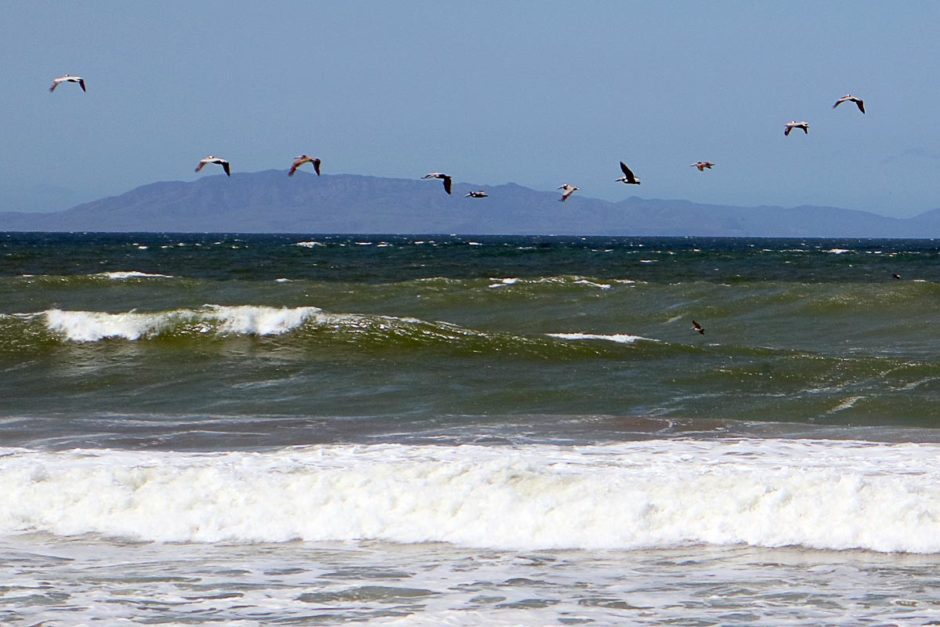
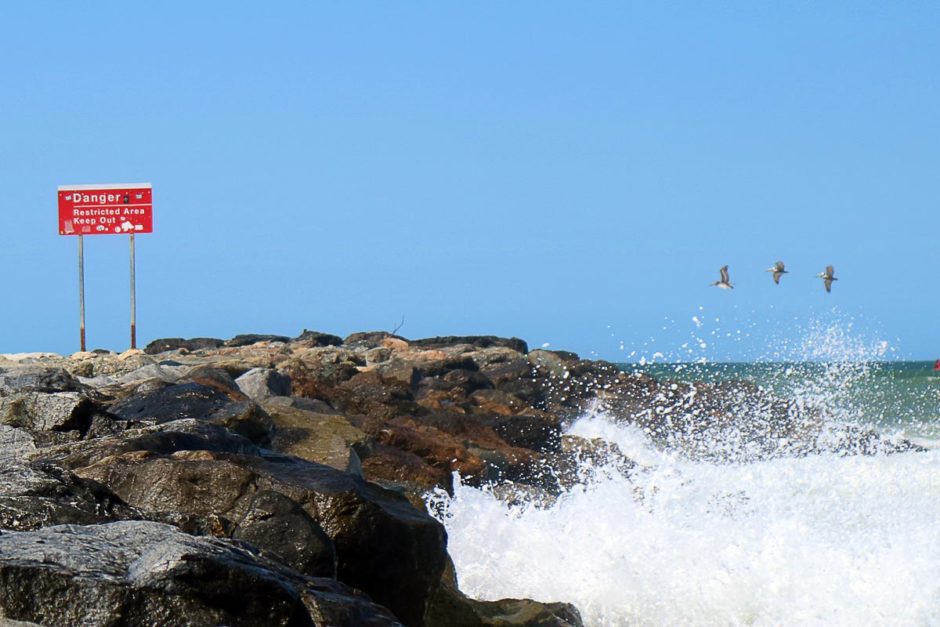
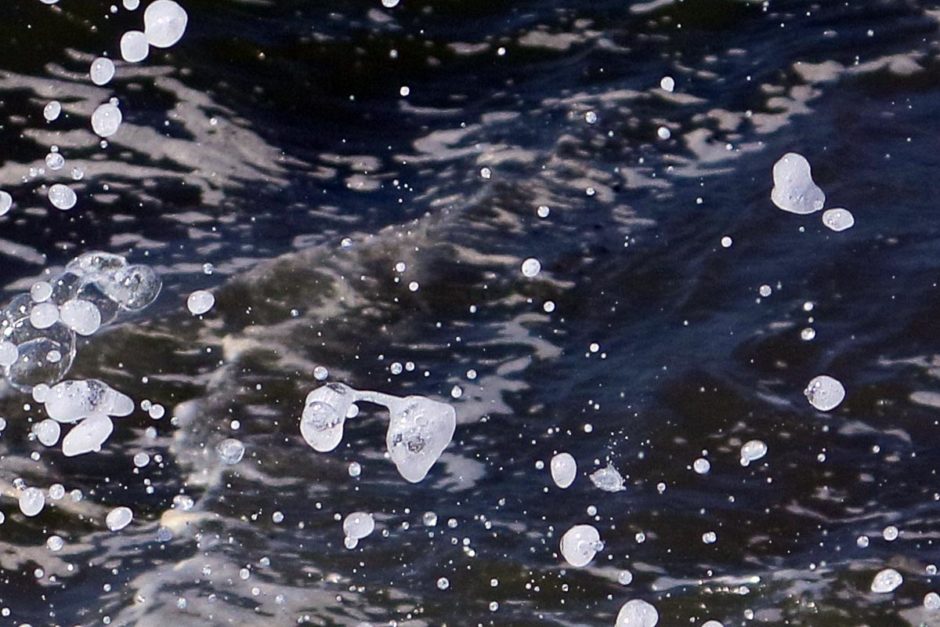
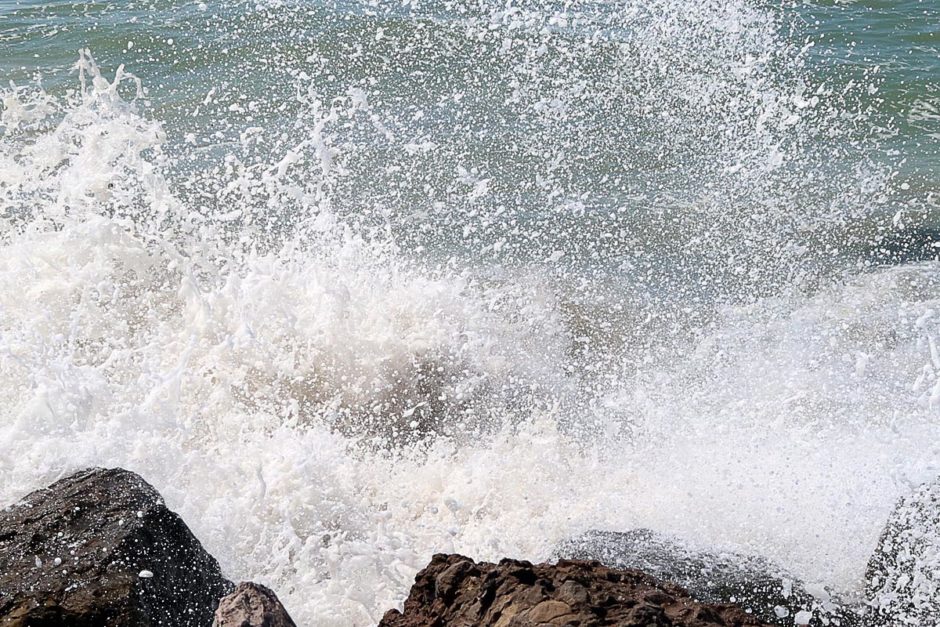
Across the channel you can clearly see the Channel Islands as large, flat shapes rising on cliffs from the sea. I kept trying to get photos capturing everything at once – the Islands, seagulls, water, rocks, and big waves. All while Masayo and I withstood the chilly-but-not-freezing wind, squinted in the sun, and tried in vain to talk over the noise of it all.
We resolved to come back another time to try to make it out to at least one of the Islands by ferry. But this initial Park visit was already something to remember – an excellent introduction into the National Parks Road Trip and a physically and mentally stimulating look into California’s distant past.
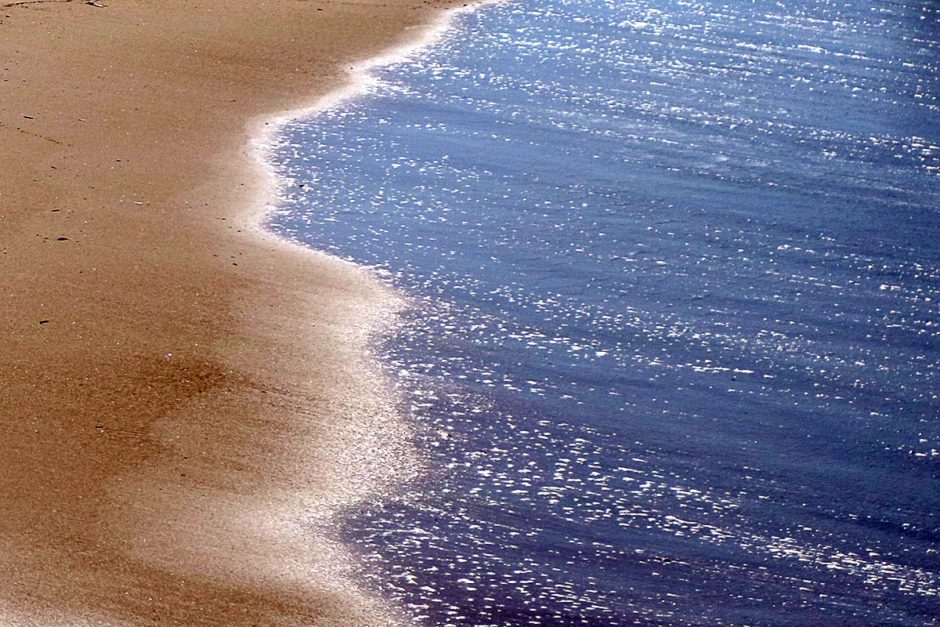
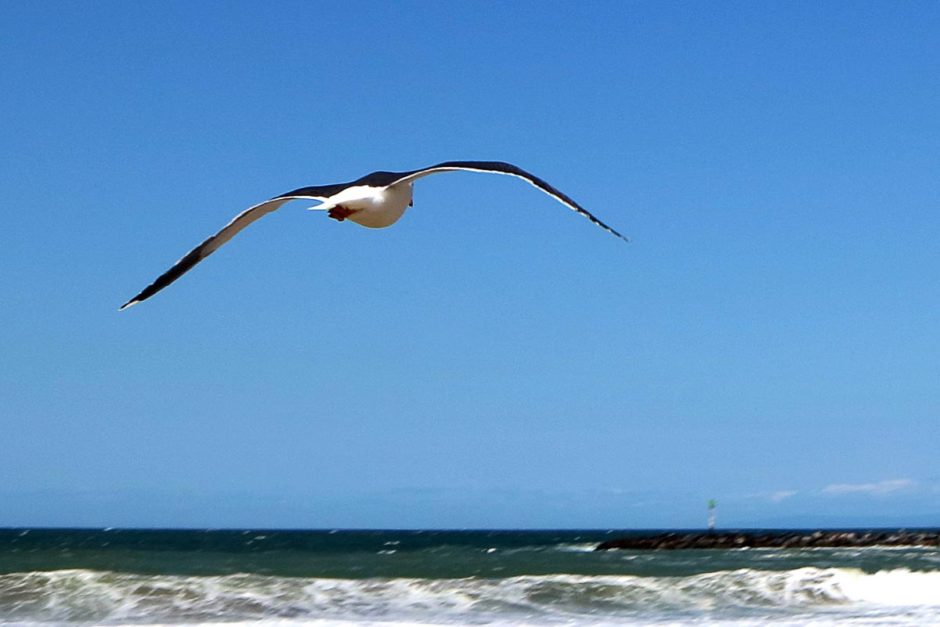
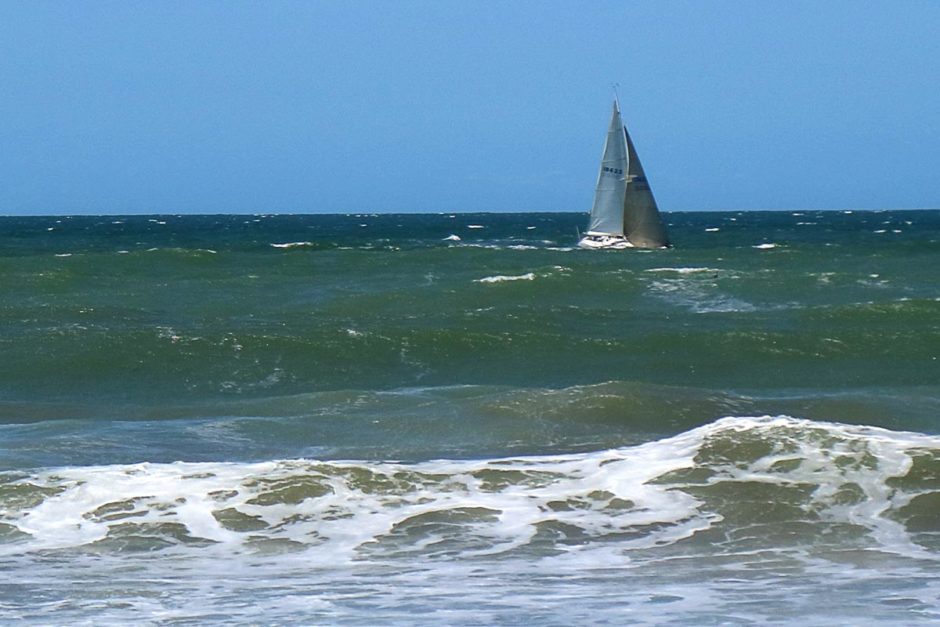
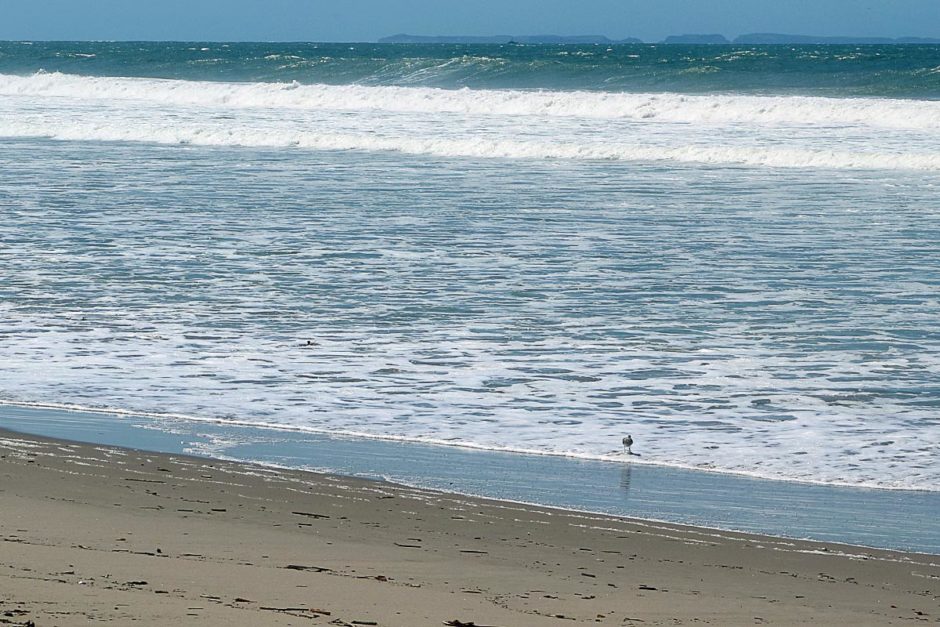
The travel gods gave us cheap wi-fi
After debating whether or not we’re going to need wifi on this trip, Masayo and i decided that it would be nice to be connected while in the car. Otherwise we’ll be cut off from civilization unless a hotel or coffee shop has wifi we can use with our Japanese phones.
Internet research suggested that Verizon might be the best choice for our needs, and a check of Google Maps showed a Verizon store not five minutes from our hotel in Thousand Oaks.
The travel gods were clearly giving us a scent to follow.
We drove over to a mall called The Oaks and wandered around until we found the Verizon shop. I explained the situation the best I could – there are a lot of unusual details they probably don’t get every day at phone stores in the US.
The answer was that we could buy a little device called Jetpack for $200, and then pay about $60 per month for the service itself (up to a certain number of gigabytes). Over $350 for three months’ of wifi. That was way on the upper extreme of what I though it might be worth.
But then they guy told us to wait a second and went into the back room. When he emerged he announced that he had an extra Jetpack that someone had returned, and we could have it for free.
Wow.
Then he looked into the wifi packages they offered more closely, and found that we could pay $60 for two months’ service, with a total limit of 5 GB of data. If we needed more we could buy it later.
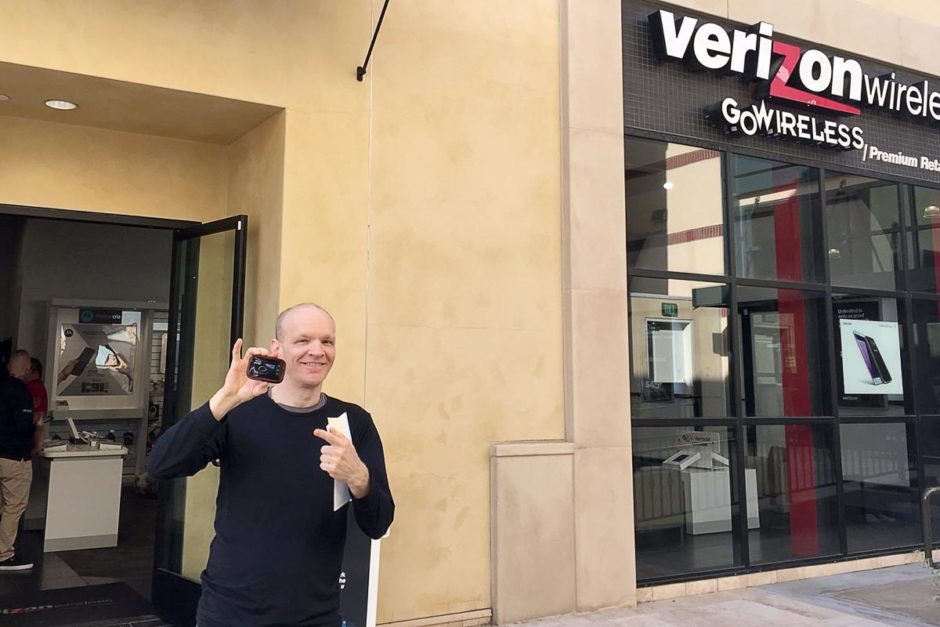
And so, rather than $350 for three months, we paid $60 for two months and will pay a little for the final month later on. Huge savings, and all because the guy at Verizon was just a nice guy. (He joked that he should have asked us to slip him $20 outside; I’d have taken that deal but free is even better.)
In the room we tested it and it worked. I don’t have any idea how long it will take us to use up 5 GB; we’ll be careful but for now – we’re connected!
Diabetes is winning the war vs. jet lag
My blood sugar this morning was 212. I was pretty disappointed to be even a little high like that – it had been 272 before bed and I’d taken three units of Humalog, which I worried would make me low.
Hardly.
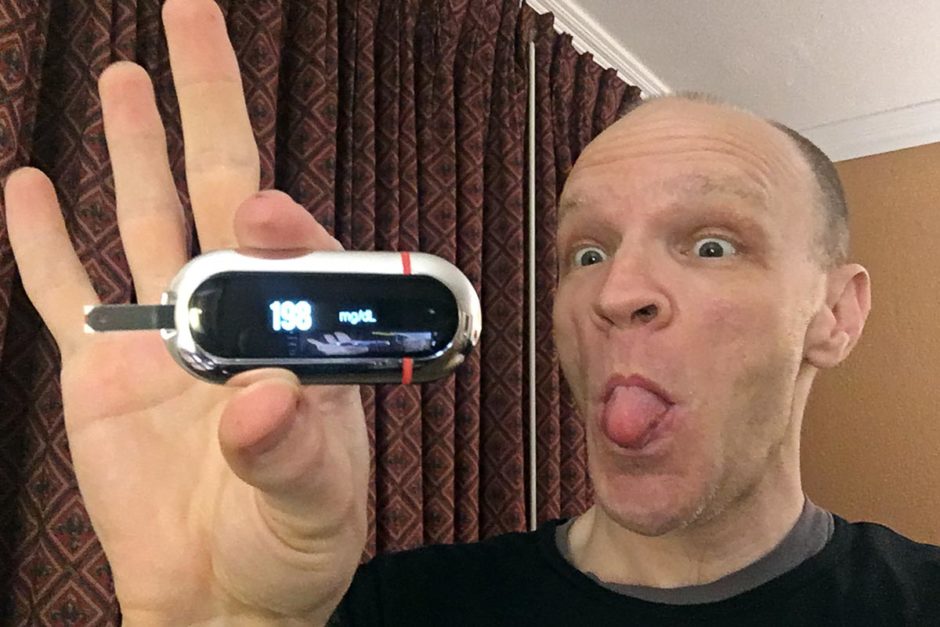
Good-natured ribbing of my One Drop meter.
But as it turned out, that was the last over-200 reading of the day. In front of the Channel Islands Visitor Center I checked and, despite a tricky hotel breakfast that had included a shot, cereal, part of a waffle, and another shot, I was 145. It was the first really reasonable reading since the Tokyo airport. (And I flubbed the One Drop photo I tried to get in front of the Park’s sign.)
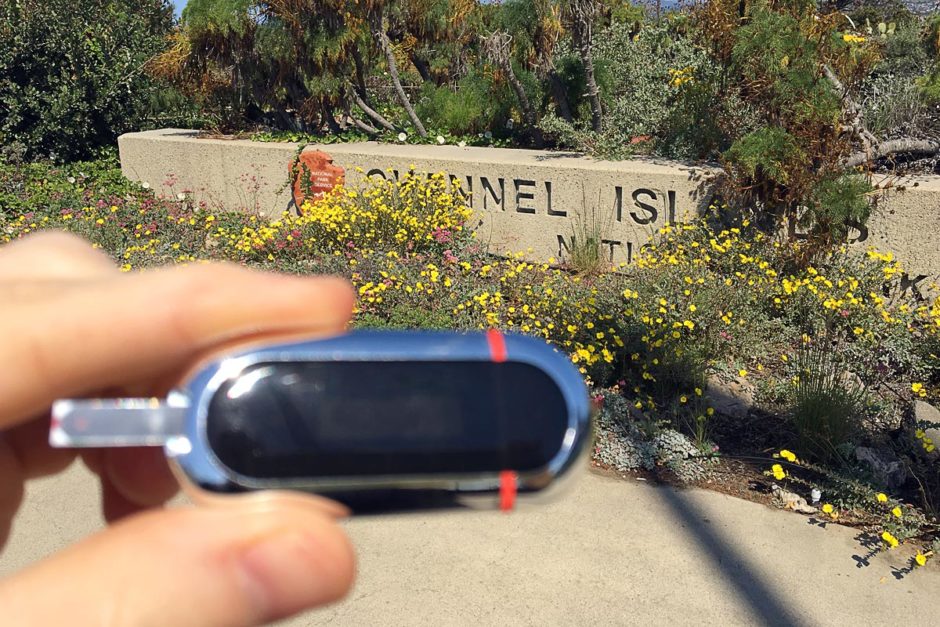
Not the photo I intended, but it has its own artistic merits.
Lunch, after getting low in the car on the return drive and downing some glucose packets, was a chicken sandwich and curly fries from Jack In The Box – I rarely eat fast food these days, living in Japan, and had to go by the nutrition info on Jack In The Box’s website for the sandwich and guessing about the fries that Masayo and I split for my Humalog shot. Later, after the good news from Verizon, I was 198.
Less than 200 – that counts!
Dinner was yet more mysterious and difficult food: a tostada bowl from El Pollo Loco. (We’re getting way too comfortable with fast food way too fast on this trip!) Again I looked at the nutrition info on the web and guessed my Humalog shot based on that.
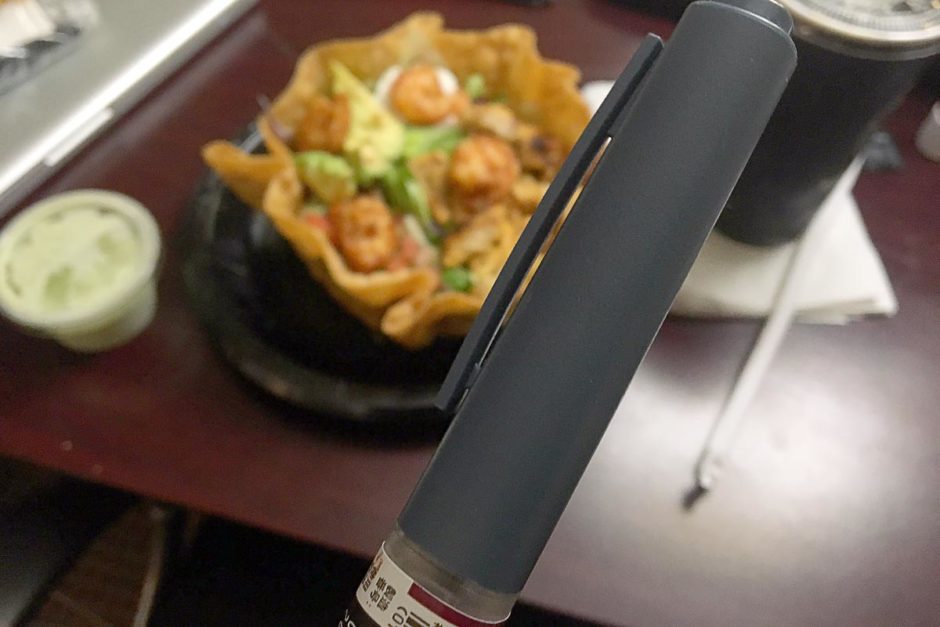
Before bed: 130. And I stayed up until about midnight like a local, with no jet laggy downward pull on my eyelids. I’ve had quite a few highs, consistently, on this trip so far, but when the jet lag went so did the highs. There will be more, but for now I will consider weird sleeping patterns having been the culprit.
Need to find a way to eat healthier and cheaper though!
Thanks for reading. Suggested:
- Share:
- Read: Day 5: L.A. glitz, meet the San Bernardino Mountains
- Join: Free email newsletter (info and early video access)
- Support: Patreon (much earlier video access and other perks)

Support independent travel content
You can support my work via Patreon. Get early links to new videos, shout-outs in my videos, and other perks for as little as $1/month.
Your support helps me make more videos and bring you travels from interesting and lesser-known places. Join us! See details, perks, and support tiers at patreon.com/t1dwanderer. Thanks!
Want more? Get the free newsletter
Join us! Sign up to my email newsletter to receive updates, behind-the-scenes info,
and early links to my new YouTube videos before everyone else
